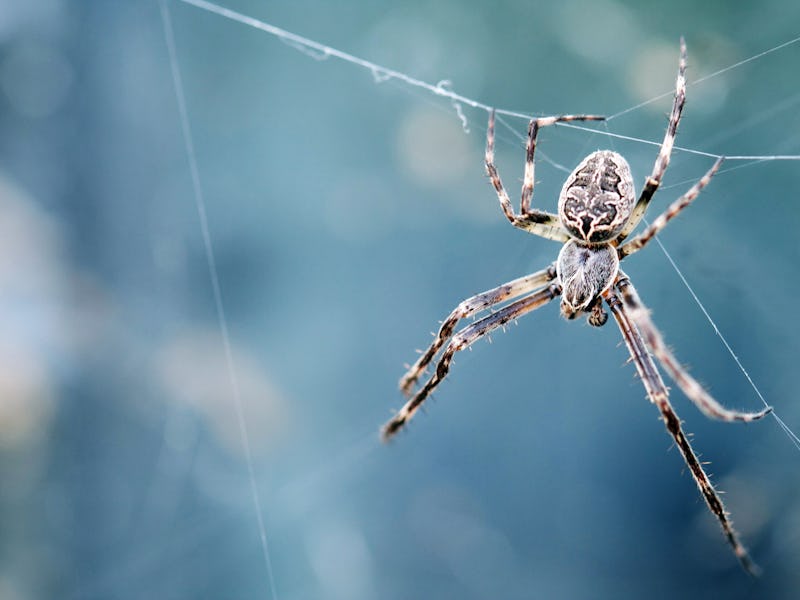Good news for your nightmares: Spiders can fly. Despite not having wings, new research shows that spiders have the ability to propel themselves using the Earth’s electric field, with little to no help from wind or webs. Because humans can’t feel these electric currents, their role in biology can often go ignored. But if electrostatic is what is helping spiders fly more than two miles high in the air, let’s pay attention.
In a study published in Current Biology on Thursday, Drs. Erica L. Morley and Daniel Robert of the University of Bristol found that when spiders are placed in a chamber with no wind but a small electric field, they were still able to to fly, despite the prevailing idea that a spider’s flight was reliant on wind currents.
How Spiders Become Airborne
When spiders are airborne, a behavior that’s often described as “ballooning,” most observers assumed that their movement is influenced by air streams. However, this prevailing view couldn’t explain why larger spiders are airborne for extended periods of time, nor could any current aerodynamic models explain these vague ballooning mechanisms.
“Many spiders balloon using multiple strands of silk that splay out in a fan-like shape,” the study explains. “Instead of tangling and meandering in light air currents, each silk strand is kept separate, pointing to the action of a repelling electrostatic force.” Such “ballooning,” Morley and Robert found, was not reliant on randomized airstreams that would have tangled and or detoured a spider’s flight but was most likely triggered by electric fields.
The team of researchers found that sensory hairs on spiders’ bodies moved whenever an electric field was turned on. These hairs, known as trichobothria, would stand up much like human hairs do from static electricity, and signaled that a spider’s take-off was imminent.
Spiders and Electric Fields
For a better understanding of the spiders’ behavior under electric fields, the scientists looked to bumblebees, whose mechanosensory hairs are also sensitive to electric fields. These early studies with electrostatic created by Morley and Robert suggest that a spider’s trichobothria is sensitive to electric fields and might be what insights its lift-off and airborne behavior.
If Morley and Robert’s proposal that spiders can detect electric fields is proven, the spooky arachnids will be the second arthropod species, after bees, known to use electric fields at levels found under natural atmospheric conditions.
The team’s study of atmospheric electricity isn’t just important to the arachnophobes wondering how spiders could possibly get scarier; it could offer key information on the predictive capabilities of insects and arachnids. Morley and Robert intend to continue testing the influence of electric fields in spiders as it could be a key aspect to understanding mass migration patterns in other arthropod animals.
